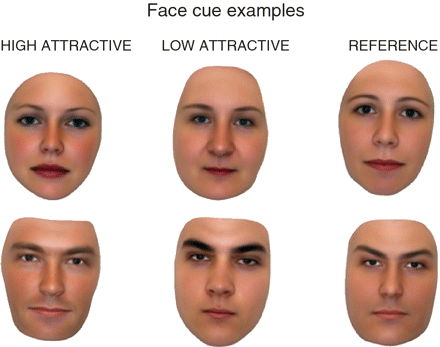Get probably the most out of your milf dating experience
When it comes down to dating, there are a great number of options available. but if you would like get the most from your experience, you should think about making use of a milf dating site. these sites were created designed for singles that are interested in dating older females. there are a lot of great milf dating sites on the market. however, to make the much of your experience, you should choose a site that’s well-designed and has now a lot of features. check out of the best milf dating sites:
1. milf times – this site is one of the most popular milf dating sites. it has plenty of features, including a search engine, a forum, and a dating section. 2. mature women international – this site is designed for singles that interested in dating older females. 3. 4. 5. if you’re interested in a website that’s well-designed and has plenty of features, you should look at using one of these simple sites.
Get started now and discover your milf match today
Top milf sites are a terrific way to find a match that is right for you. with so many available choices, it could be difficult to decide what type is suitable for you. but with only a little research, you will find the perfect website for you personally. first, you ought to decide what you are looking for in a partner. are you looking for someone to spending some time with, you to definitely have a relationship with, or anyone to have a sexual relationship with? once you’ve determined what you are actually shopping for, you could begin to check out the various top milf sites. each site has features and benefits which may be suitable for you. like, some sites might have more members than the others, that might signify you’ve got a larger possibility of finding a match. one more thing to consider could be the a long time of this users. some sites were created for individuals inside their twenties, while other sites were created for people in their forties and fifties. this can be crucial that you you if you are selecting someone who’s an identical age. once you’ve determined what you are actually searching for, it is time to start looking. how to try this is always to start by utilising the search club on the website. this can enable you to slim down your search based on the criteria you have actually determined. after you have discovered a niche site that you’re enthusiastic about, it is time to begin the entire process of joining. this can be done by filling in a membership kind or by conversing with a part. after you have joined, you will be able to begin shopping for a match.
Are you willing to meet up with the hottest milfs online?
in that case, you’re in fortune, because there are lots of top milf sites on the market to explore.whether you’re looking for milf porn or just wish to speak to some horny milfs, these sites ‘ve got you covered.but what type is the best?that’s your responsibility to determine.there are so numerous great top milf sites online it’s difficult to choose only one.but if you’re trying to find a good place to start, we suggest looking at milf hunter.this website hosts some of the hottest milfs on earth, and they are always up for a chat.plus, their videos are top notch, which means you’re sure to get the fill of milf porn.if you are looking for more hardcore milf porn, you then should discover milf fidelity.this website is focused on milfs that ready to screw hard.so if you should be trying to find some hardcore milf porn, then this is the website for you personally.but if you’re simply in search of some hot milf talk, then we recommend checking out milf talk.this website is filled with horny milfs that are always prepared for a chat.so if you are trying to find a spot to speak to some horny milfs, then here is the site available.and finally, if you’re trying to find a good option to get milf porn, then we recommend checking out milf tube.this site has got everything you need to discover the hottest milfs on the planet.so whether you’re looking for milf porn, milf talk, or perhaps some hot milf action, we recommend looking into one of many top milf sites on the market.
Get prepared to just take your relationship life to another location degree now
If you are looking for a dating site that suits milfs, then you’re in fortune. there are a variety of great choices available, and every one provides something unique. if you’re a new comer to the dating scene, or if you’re just finding a site that gives a more mature dating experience, then chances are you’ll be wanting to look at milf dating site. this site is specifically designed for milfs, also it provides several features which make it a fantastic choice for those shopping for a dating site. another great option for those finding a dating site that provides milfs is mature women worldwide. this site is created specifically for all those trying to find a dating site that provides an even more mature dating experience. if you are selecting a dating site that gives an even more old-fashioned dating experience, you then’ll be wanting to look at christian mingle.

Unlock the benefits of top milf sites now
If you are considering ways to add spice to your sex life, then you should consider looking into a number of the top milf sites on the internet. these sites provide a wide variety of content, including videos, photos, and blogs. a few of the advantages of utilizing a top milf site include:
– increased libido: many of the top milf sites offer exciting and stimulating content that may raise your libido. – increased closeness: if you’re trying to boost your intimacy along with your partner, then making use of a top milf site may be a great way to do that. – increased satisfaction: top milf sites provide top-notch content that’s frequently well-written and engaging. this may result in increased satisfaction for both both you and your partner. if you are seeking to add spice to your sex life, then you should definitely consider utilizing a top milf site. these sites offer numerous content, while the advantages are tremendous.
Join now and enjoy the best milf dating site on web
top milf site is the greatest dating site on the internet for those who are looking a milf. it is a great place to find a milf who’s finding a relationship, a milf that is searching for an informal encounter, or a milf that is interested in a serious relationship. the site is straightforward to utilize and easy to navigate. there are a lot of users on the site, and that means you will likely find a milf who’s wanting a relationship or a significant relationship. the site is also great for finding a casual encounter with a milf. the site is user-friendly and simple to make use of, which means you should be able to find a milf that is finding an informal encounter easily and quickly.
Find the top milf sites for your needs
Finding the proper milf site may be a daunting task. with many options available, it could be difficult to understand the place to start. luckily for us, we have compiled a list of the top milf sites for your requirements. whether you are considering a niche site that has milf pornstars exclusively, or one which has a wider range of content, we have you covered. we have also included a listing of long-tail keywords and lsi key words which are highly relevant to the important thing topic of milf sites. ensure that you consist of them in the article, so that you can rank higher for the key words you are focusing on. so, if you are finding the most effective milf sites around, be sure to discover our list!

Experience the enjoyable and excitement of top milf site now
There are many reasons why you ought to see a top milf site.first and foremost, these websites offer a unique and exciting experience which you wont find on other website.secondly, these sites offer an abundance of information and resources that can help you improve your dating abilities.and finally, these sites provide a safe and comfortable environment in which to meet up with brand new individuals.if you find attractive experiencing all of these advantages yourself, then chances are you should definitely go to a top milf site.there are some great options available, to get the site that is ideal for you.whatever your requirements, you’re certain to find a top milf site that provides a unique and exciting experience.so then make the most of this opportunity now?you won’t be sorry!
Discover the top milf site for fun and exciting dating
When it comes down to locating a date, there are lots of options available. whether you’re looking for a casual date or something like that more serious, there’s a site on the market available. but which is the best? that’s what we’re here to learn. we have compiled a listing of the top milf site, and they’re all well worth looking at. whether you are looking for a site that’s geared towards singles or partners, these websites have actually something for you personally. what exactly have you been waiting for? get check them out!












Recent Comments